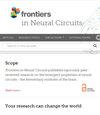用于高分辨率小鼠全脑成像的免疫标记兼容 PEGASOS 组织清除技术
IF 3
3区 医学
Q2 NEUROSCIENCES
引用次数: 0
摘要
新颖的脑部清除方法以高分辨率提高了整个脑部的可视化程度,从而彻底改变了成像技术。然而,将免疫染色感兴趣靶标的标准工具与清除方法相结合的工作却相对滞后。我们将整装免疫染色与 PEGASOS 组织清除技术相结合,称为 iPEGASOS(免疫染色兼容 PEGASOS),以解决清除过程中信号淬灭的难题。此外,我们还展示了 iPEGASOS 在可视化神经化学标记或病毒标签方面的实用性,以增强转基因小鼠品系无法提供的可视化效果。我们的研究包括三种不同的应用,每种应用都展示了这种方法的多功能性和有效性。我们采用整装免疫染色法增强转基因报告基因小鼠系的分子信号,以观察特定细胞群的全脑空间分布。我们还通过增强注入大脑的病毒示踪剂的信号,大大改善了神经回路连接的可视化。最后,我们展示了不使用基因标记物的免疫染色法,以选择性标记阿尔茨海默病小鼠模型中的β-淀粉样蛋白沉积,从而促进对病理特征的全脑综合研究。本文章由计算机程序翻译,如有差异,请以英文原文为准。
Immunolabeling-compatible PEGASOS tissue clearing for high-resolution whole mouse brain imaging
Novel brain clearing methods revolutionize imaging by increasing visualization throughout the brain at high resolution. However, combining the standard tool of immunostaining targets of interest with clearing methods has lagged behind. We integrate whole-mount immunostaining with PEGASOS tissue clearing, referred to as iPEGASOS (immunostaining-compatible PEGASOS), to address the challenge of signal quenching during clearing processes. iPEGASOS effectively enhances molecular-genetically targeted fluorescent signals that are otherwise compromised during conventional clearing procedures. Additionally, we demonstrate the utility of iPEGASOS for visualizing neurochemical markers or viral labels to augment visualization that transgenic mouse lines cannot provide. Our study encompasses three distinct applications, each showcasing the versatility and efficacy of this approach. We employ whole-mount immunostaining to enhance molecular signals in transgenic reporter mouse lines to visualize the whole-brain spatial distribution of specific cellular populations. We also significantly improve the visualization of neural circuit connections by enhancing signals from viral tracers injected into the brain. Last, we show immunostaining without genetic markers to selectively label beta-amyloid deposits in a mouse model of Alzheimer’s disease, facilitating the comprehensive whole-brain study of pathological features.
求助全文
通过发布文献求助,成功后即可免费获取论文全文。
去求助
来源期刊

Frontiers in Neural Circuits
NEUROSCIENCES-
CiteScore
6.00
自引率
5.70%
发文量
135
审稿时长
4-8 weeks
期刊介绍:
Frontiers in Neural Circuits publishes rigorously peer-reviewed research on the emergent properties of neural circuits - the elementary modules of the brain. Specialty Chief Editors Takao K. Hensch and Edward Ruthazer at Harvard University and McGill University respectively, are supported by an outstanding Editorial Board of international experts. This multidisciplinary open-access journal is at the forefront of disseminating and communicating scientific knowledge and impactful discoveries to researchers, academics and the public worldwide.
Frontiers in Neural Circuits launched in 2011 with great success and remains a "central watering hole" for research in neural circuits, serving the community worldwide to share data, ideas and inspiration. Articles revealing the anatomy, physiology, development or function of any neural circuitry in any species (from sponges to humans) are welcome. Our common thread seeks the computational strategies used by different circuits to link their structure with function (perceptual, motor, or internal), the general rules by which they operate, and how their particular designs lead to the emergence of complex properties and behaviors. Submissions focused on synaptic, cellular and connectivity principles in neural microcircuits using multidisciplinary approaches, especially newer molecular, developmental and genetic tools, are encouraged. Studies with an evolutionary perspective to better understand how circuit design and capabilities evolved to produce progressively more complex properties and behaviors are especially welcome. The journal is further interested in research revealing how plasticity shapes the structural and functional architecture of neural circuits.
 求助内容:
求助内容: 应助结果提醒方式:
应助结果提醒方式:


